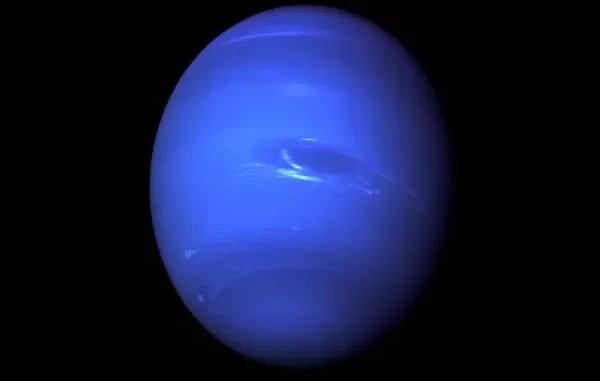
Hi everyone! Today we’re going to learn about some of the most interesting facts about Neptune, the eighth planet in our solar system. Neptune is a gas giant like its neighbor, Uranus, and it’s incredibly far away from the Sun.
Here are five interesting facts about Neptune that kids will love to learn about.
- Neptune has the strongest winds in the solar system.
- Neptune is about four times bigger than Earth.
- Neptune is the farthest planet from the Sun.
- Neptune has 14 known moons, the second most in our solar system.
- Neptune is one of the few planets in our solar system that can’t be seen with the naked eye. Now that you know a few facts about Neptune, let’s dive in and learn more!
Neptune is the only planet that was discovered by mathematical prediction.
Neptune is the only planet in our Solar System that was discovered through mathematical prediction rather than direct observation.
This was achieved in the early 19th century by French astronomer and mathematician Urbain Le Verrier, who used Newton’s law of universal gravitation to calculate the position of the planet.
Through his calculations, he concluded that an unknown planet must exist beyond Uranus to explain Uranus’ irregular orbit. Subsequently, his prediction was confirmed when the planet was observed by German astronomer Johann Gottfried Galle in 1846.
Neptune is the eighth planet from the sun and is the fourth largest planet.
Neptune is the eighth planet from the Sun and the fourth largest. It is an icy giant world, composed of hydrogen, helium, and methane. Neptune orbits the Sun at an average distance of 4.5 billion kilometers and completes one revolution every 165 years. It has a total of 14 moons, the largest of which is Triton.
Neptune has a distinctive blue-green color, caused by the absorption of red light by methane in the atmosphere. The planet has a powerful magnetosphere, a strong winds, and large storms. Its atmosphere is composed mostly of hydrogen and helium, with traces of methane and other hydrocarbons.
Neptune has 13 moons, the largest being Triton.
Neptune has thirteen known moons, the largest of which is Triton. Triton is unique among the moons of the Solar System, as it is the only known moon to orbit a planet in the opposite direction to its planet’s rotation.
Triton was discovered by British astronomer William Lassell in 1846 and is the only large moon to have a retrograde orbit. It is also the only moon in the Solar System to have a nitrogen-dominated atmosphere.
The other twelve moons of Neptune are Naiad, Thalassa, Despina, Galatea, Larissa, Proteus, Halimede, Psamathe, Sao, Laomedeia, Neso, and Hippocamp.
Neptune is the farthest planet from the sun and takes 165 Earth years to make a complete orbit.
Neptune is the most distant planet from the Sun and has an orbital period of 165 Earth years. This means that it takes 165 Earth years for Neptune to make a complete orbit around the Sun. This lengthy orbital period is much longer than the other planets in the Solar System, which typically have orbital periods of less than one Earth year.
Neptune is believed to have a blue tint because it contains methane gas which absorbs red light.
Neptune is believed to possess a blue hue due to the presence of methane gas in its atmosphere. Methane gas absorbs red light, creating a blue tint in the planet’s atmosphere.
Leave a Reply